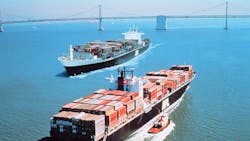Is sourcing and manufacturing in Asia for the North American market still a viable option for U. S. companies?
There are still many good reasons for North American OEMs to source and manufacture in Asia. However, more careful cost-benefit analysis is required now than before. For many U. S. companies, manufacturing offshore incurs risks related to the extended supply chain, quality issues, shipping costs, duties, currency revaluations, and delays in time to market. Many firms, therefore, set a benchmark for minimum cost savings — typically from 15% on up — before accepting the risks. This is achievable in some but not all cases, as cost savings available several years ago may have disappeared in today’s offshore manufacturing environment.
What are the advantages of manufacturing in Asia?
The chief advantages are lower production and capital costs and greater manufacturing capacity. While labor rates and the cost of social safety nets are steadily increasing in Asian factories, total labor costs are still below those in the U. S.
U. S. factories may face difficult expansion decisions if demand for their goods approaches in-house production capacity. When choosing between building new plants here and offshoring to existing Asian factories, offshoring presents a lower risk. Also, as a domestic factory’s aging machines near end of life, it may be attractive to contract some manufacturing to an Asian factory that has already retooled with modern equipment.
What types of products are best suited for this?
Generally, products with high labor content are best suited for Asian sourcing. For example, it’s not practical to fabricate extrusions in Asia because simple extrusion dies are inexpensive, even in the U. S., and the cost of the extruded material is likely to be the same worldwide. However, take the same extrusion and cut, machine, heat treat, and paint it, and you’ve got a viable project for Asian outsourcing.
There is a sweet spot for offshoring projects. Products in the design and development stage are best kept close to home, as it helps ensure more-effective collaboration among engineering, manufacturing, and management. On the other hand, projects with high tooling expenses, such as molds for complex castings or progressive stamping dies, can offer considerable savings. For small-to-midsized production runs, less-expensive tooling from offshore manufacturers may be the only way to achieve cost targets when amortizing tooling over a small number of parts.
What’s the best approach to sourcing from Asia?
The best approach to successful sourcing from Asia is to enlist the assistance of a knowledgeable organization with boots on the ground in Asia. This assistance must be from a company that knows local business practices and business culture, and maintains good relations with capable factories. Its personnel must also be well versed in manufacturing processes and engineering. Finding a partner company with all of these skill sets is quite a challenge.
|
About the guest author: Michael Bloom is President of Sinotech in Portland, Oregon, which has been engineering and supplying custom mechanical and electromechanical parts to clients across the globe for over 20 years. Michael is certified by the U.S. Small Business Administration as a Global Trade Counselor and by NASBITE International as a Certified Global Business Professional (CGBP). |
Unfortunately, U. S. and state governments do not offer a lot of support — they aid exporters, not importers. One place for help is foreign organizations whose purpose is to encourage trade with their own country. Groups like the Hong Kong Trade Development Council can be quite helpful.
Consider attending foreign trade shows. And approach the contacts you and your associates may have in the country of interest. Though likely not the person qualified to represent you, at least they can point you in the right direction and with a higher level of confidence in the referral. Use caution searching for suppliers on Web sites like www.alibaba.com, as you never know what or who you are getting. Of course, you can use the services of a company like Sinotech that already has sourcing infrastructure on the ground.
The biggest pitfall we see is choosing the wrong factory in the first place. If you select the wrong factory, a project is likely to fail regardless of any assistance you may later provide. Trying to locate a suitable factory from arm’s length is a recipe for disaster. Even with a good sourcing partner, be prepared to visit the factory and conduct your own audit before making a decision. Look for a partner who understands quality systems and has processes in place to protect your interests.

